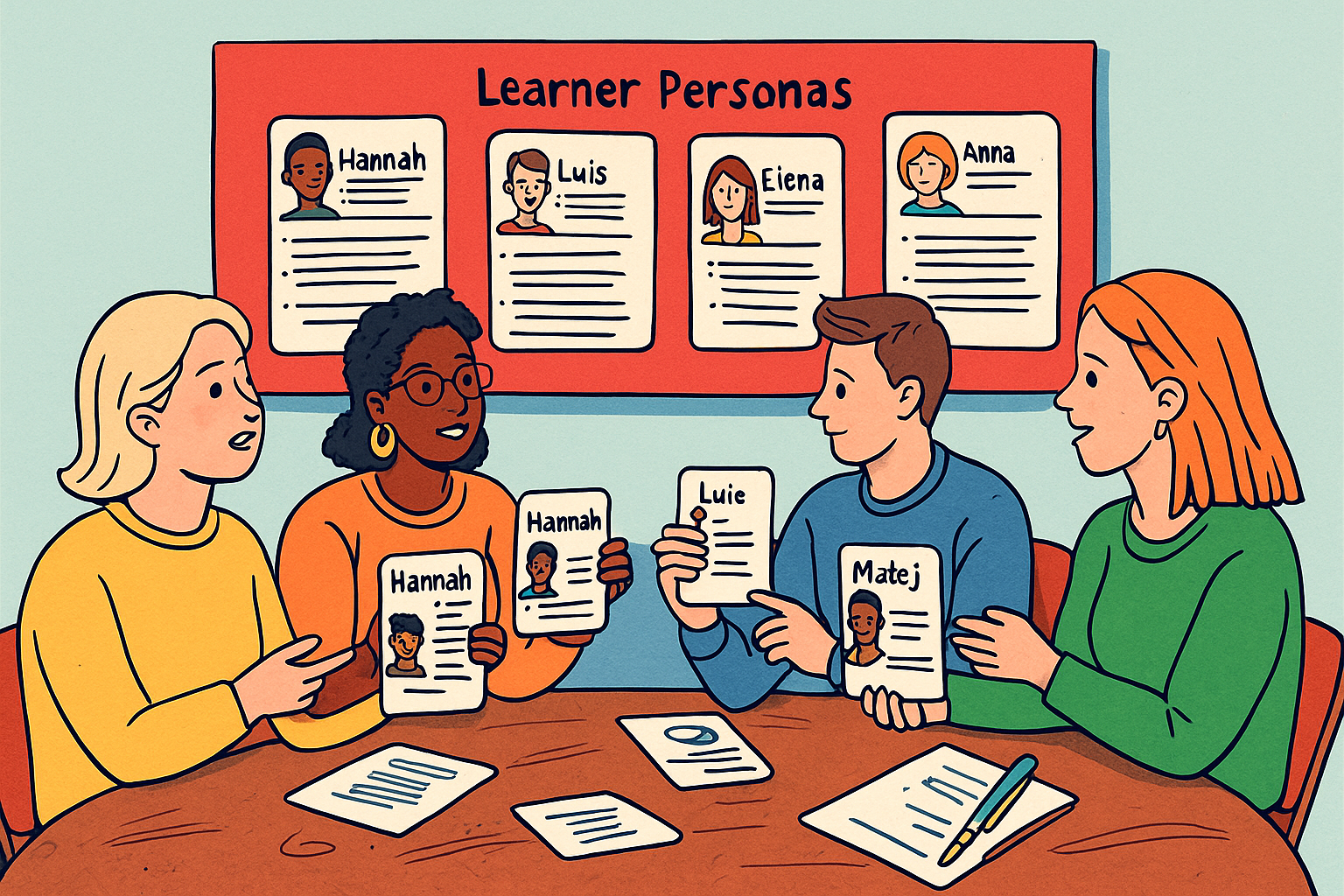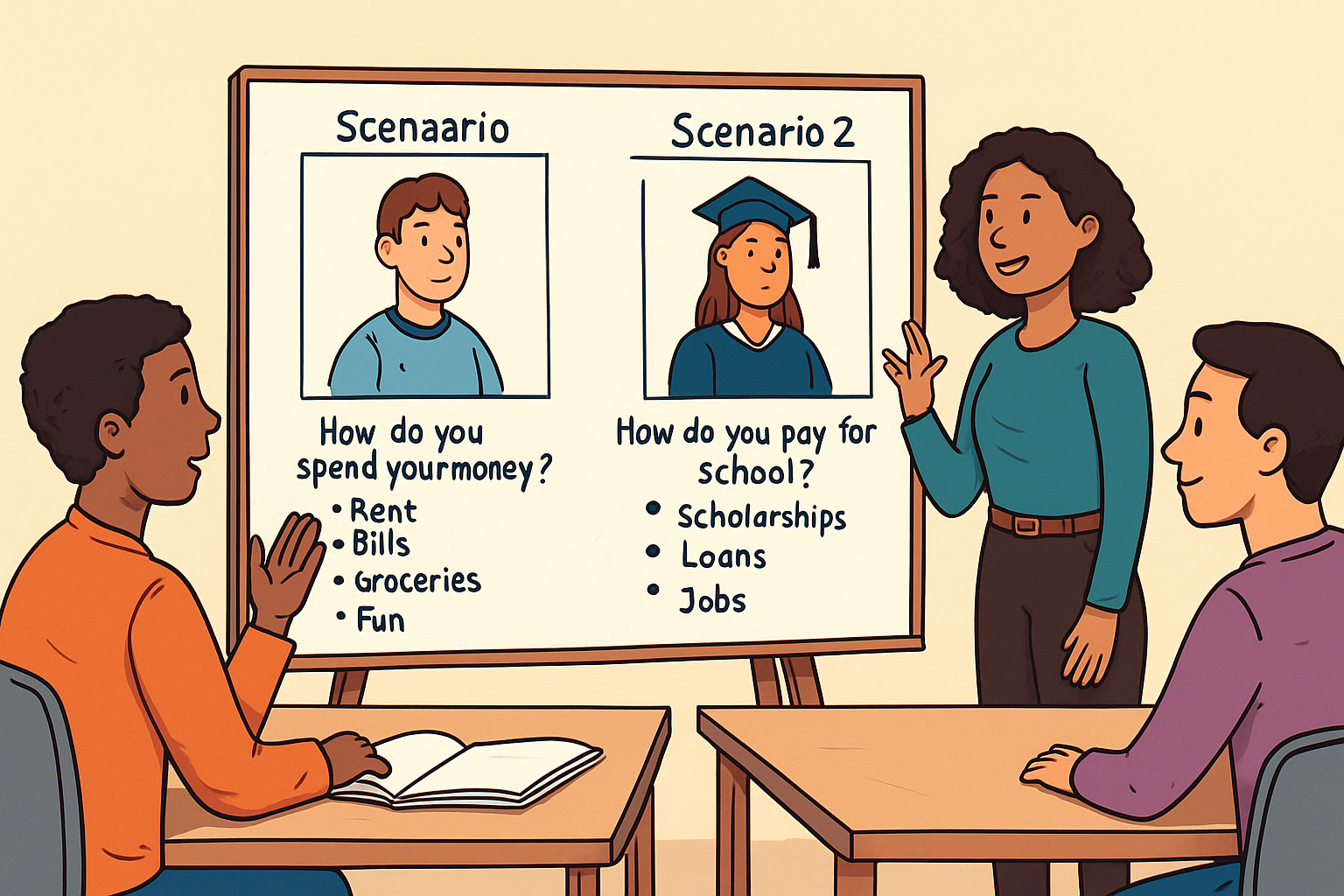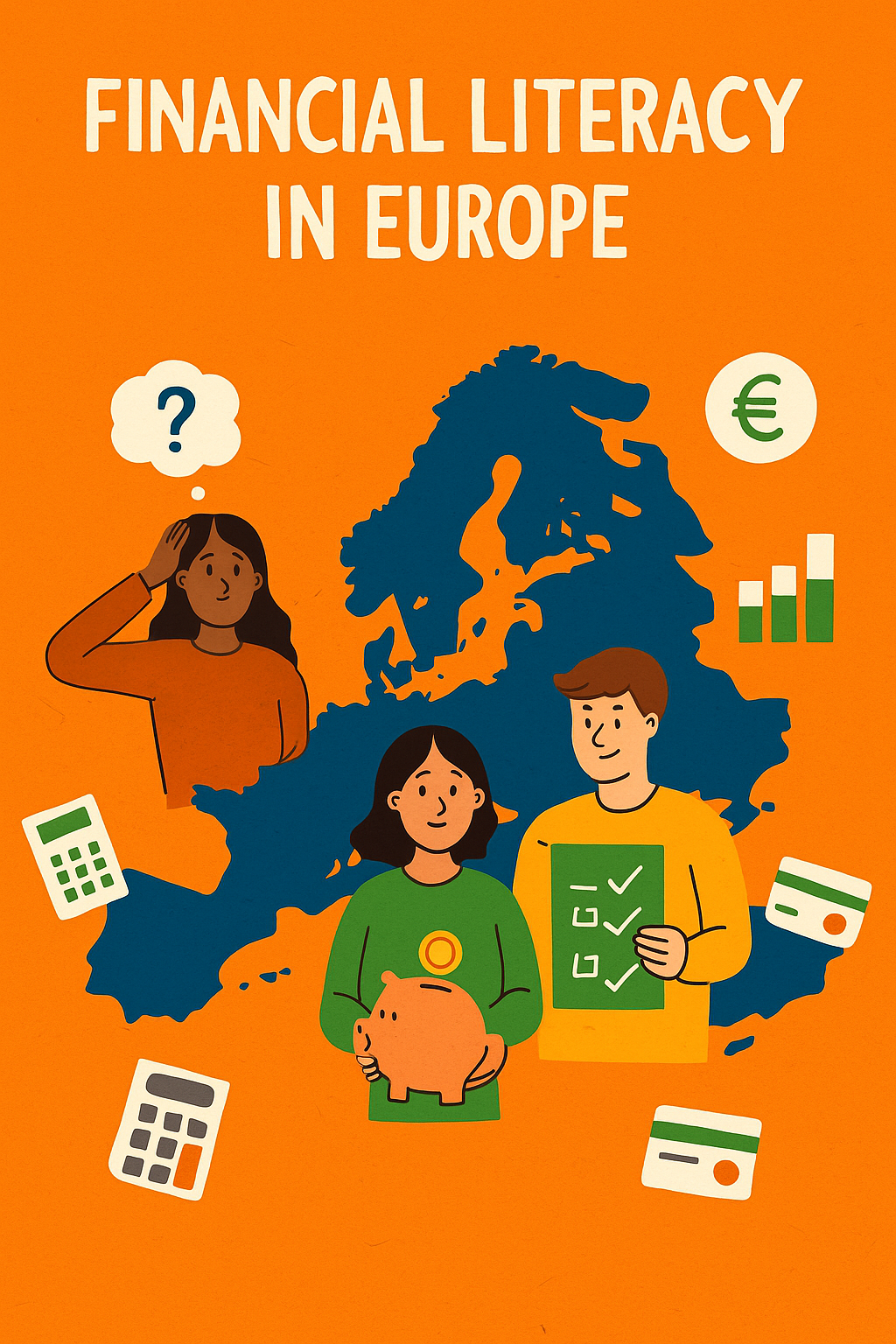Fra personaer til praksis: Hvordan elevprofiler former bedre finansiel uddannelse
Finansiel forståelse er ikke en universel færdighed. Den måde, en 25-årig freelancer håndterer penge på, kan være helt anderledes end hvordan en 30-årig forælder eller en nyuddannet griber økonomisk planlægning an. Det er vigtigt at anerkende disse forskelle for at skabe læringsmaterialer, der virkelig appellerer til rigtige mennesker. Derfor... FINMAN+ integrerer brugen af elevpersonaer – et gennemprøvet designværktøj til at gøre finansiel uddannelse mere personlig, relevant og effektiv.
Hvad er lærende personaer?
Lærerpersonaer er fiktive, forskningsbaserede profiler der repræsenterer forskellige grupper af elever inden for en målgruppe. De er ikke stereotyper, men detaljerede, evidensbaserede beskrivelser af typiske individer, der indfanger deres mål, udfordringer, motivationer og læringsadfærd.
For FINMAN+ repræsenterer disse personaer unge voksne i alderen 25-30, der kommer fra forskellige sociale, økonomiske og kulturelle baggrunde. Nogle kan være professionelle i starten af karrieren, der forvalter en stabil indkomst; andre kan være freelancere, der jonglerer med uregelmæssig løn, eller unge forældre, der balancerer familiens udgifter og opsparinger.
Ved at humanisere data gennem personaer kan undervisere bedre forstå, hvem deres elever er – og hvilken slags læring de virkelig har brug for.
Hvorfor personaer er vigtige i finansiel forståelse
Finansiel forståelse er dybt personligt. Folk træffer økonomiske beslutninger baseret ikke kun på viden, men også på vaner, følelser, værdier og oplevelser. Personaer hjælper med at bygge bro over denne kløft mellem information og empati.
Brug af personaer giver undervisere mulighed for at:
- Design relaterbare scenarier – Tilpas eksempler og øvelser til de virkelige situationer, som eleverne står over for.
- Imødekomme forskellige behov – Anerkend forskelle i tillid, adgang til banktjenester eller risikoopfattelse.
- Skab målrettede læringsmaterialer – Tilpas tone, kompleksitet og fremføringsstil, så de passer til forskellige elevprofiler.
- Skab inklusion og engagement – Sørg for, at køns-, kulturelle og socioøkonomiske perspektiver er repræsenteret.
Med andre ord, personaer skaber læringsprocessen menneskecentreret – ikke kun at forme hvad vi underviser i, men også hvordan og hvorfor vi underviser i det.
Hvordan FINMAN+ bruger personaer i praksis
Inden for projektet styrer lærende personaer udvikling af scenariebaserede materialer til træning i finansiel forståelse. Under underviseruddannelsen i Zaragoza (juli 2025) udforskede partnerne, hvordan man skaber og anvender personaer som grundlag for fælles indholdsskabelse.
For eksempel kunne én persona være Elena, en 27-årig grafisk designer, der arbejder freelance, kæmper med uregelmæssig indkomst og sparer op til et hjem., mens en anden kunne være Matej, en 29-årig IT-medarbejder, der er tryg ved digitale betalinger, men ikke er klar over langsigtede investeringsmuligheder..
Disse personaer hjælper undervisere med at opbygge realistiske scenarier såsom:
- Håndtering af indkomstudsving som freelancer
- Planlægning af kortsigtede og langsigtede opsparingsmål
- Forståelse af kredit, lån og renter
- At træffe ansvarlige digitale betalings- og investeringsvalg
Ved at designe med disse personaer i tankerne sikrer FINMAN+, at ethvert scenarie føles autentisk, relaterbar og effektfuld.
Fra forskning til reel effekt
Den personabaserede tilgang stopper ikke ved design – den fortsætter gennem hele test og evaluering. Når træningsmaterialerne afprøves i 2026, vil feedback fra rigtige elever blive brugt til at forfine og validere personaerne og sikre, at de udvikler sig i takt med de faktiske behov.
Gennem denne dynamiske proces sigter FINMAN+ mod at skabe økonomisk forståelse mere inkluderende, mere praktisk og mere menneskelig – støtte unge europæere i at opbygge bæredygtige økonomiske vaner for livet.








